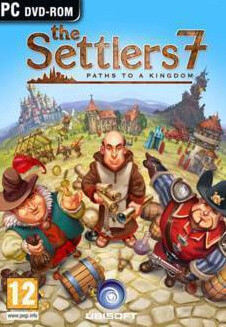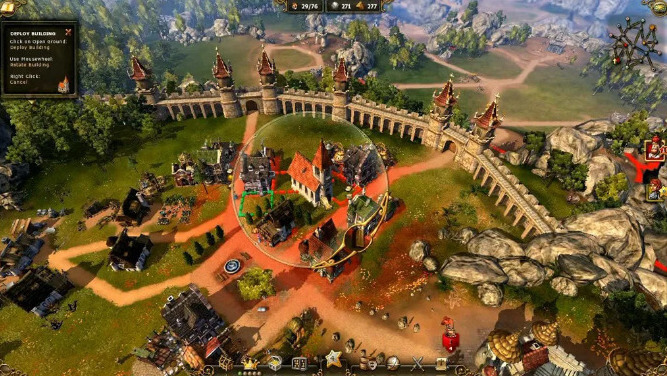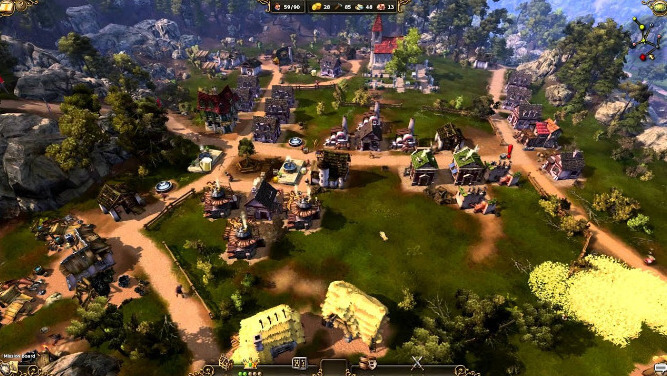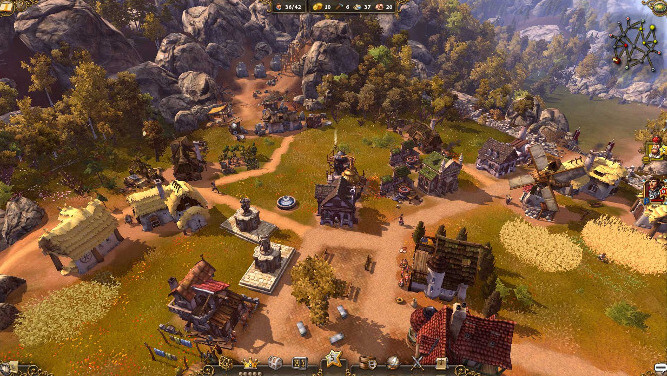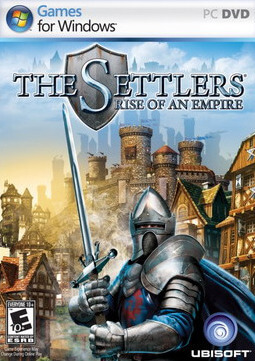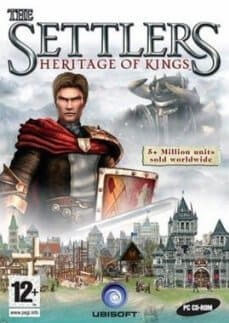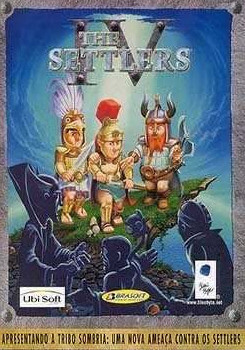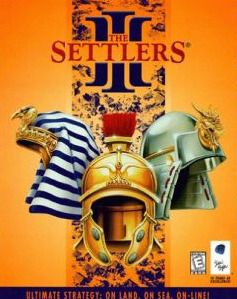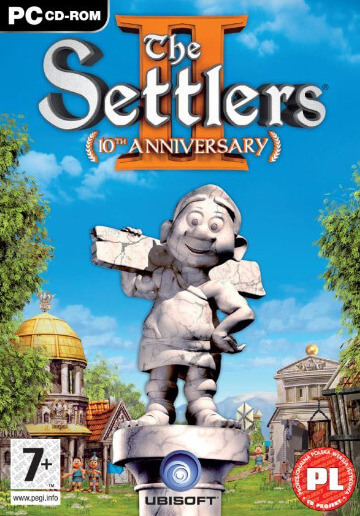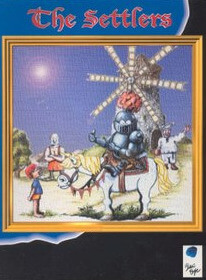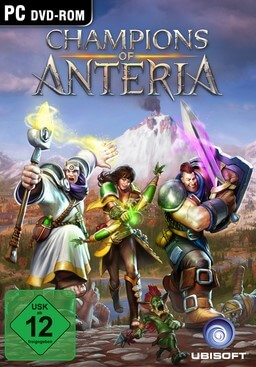The Settlers 7: Paths to a Kingdom (German: Die Siedler 7) is a city-building game with real-time strategy elements, developed by Blue Byte and published by Ubisoft. Released for Microsoft Windows and macOS in March 2010, it is the ninth game in The Settlers series. Blue Byte released three expansions in 2010; Uncharted Land (German: DLC Pack 1), Conquest - The Empire (German: DLC Pack 2), and Rise of the Rebellion (German: DLC Pack 3), released in July, September, and December, respectively. In March 2011, The Settlers 7: Paths to a Kingdom - Deluxe Gold Edition was released, containing the original game, the three expansions, an unlock code for an upcoming fourth expansion, and a copy of The Settlers III. The fourth expansion, The Two Kings (German: Die zwei Könige), was released in April 2011. In 2018, the Deluxe Gold Edition was re-released as The Settlers 7: Paths to a Kingdom - History Edition.
In the game's single-player campaign, the player controls Princess Zoé of the Kingdom of Kuron. When her father, King Konradin, learns there has been a coup in the neighbouring Kingdom of Tandria, with the Tandrian king, Balderus, forced into exile, he tasks Zoé with putting down the rebellion. Making her way through Tandria, she soon encounters the leaders of the rebellion, Lord Wolvering and his most loyal knight, Dracorian. However, telling Zoé that he is a liberator, not a rebel, Dracorian claims that he is fighting to rid the Tandrian people of Balderus's tyranny, and warns her not to trust her father. The Chronicles of Tandria, a campaign included with the Rise of the Rebellion expansion, tells a prequel story depicting how and why Dracorian and his sister Rovyn first took up arms against Balderus.
In designing Paths to a Kingdom, Blue Byte explicitly set out to correct the perceived problems of the two previous Settlers titles; Heritage of Kings (which had been criticised for focusing too heavily on combat) and Rise of an Empire (which had been criticised for its overly simplistic economic models). Roughly basing the game on the most acclaimed title in the series, The Settlers II, the designers foregrounded such popular features as road networks and complex daisy-chain economic processes, whilst emphasising economic micromanagement, technology trees, and trade requirements. However, the designers also introduced new game mechanics, particularly a dynamic Victory Points system. Additionally, for the first time in the series, the player can choose to develop their settlement along three different lines; military, technology, and/or trade, with each one requiring different gameplay strategies and styles of play. Shortly after the game's release, it became embroiled in controversy when a fault in Ubisoft's newly launched always-on DRM prevented thousands of players from playing the game over the Easter weekend.
Paths to a Kingdom received generally positive reviews, with many critics citing it as the best Settlers game since The Settlers II. Especially lauded were the graphics, Victory Points system, mission variety, and map design. In terms of criticisms, the game's DRM problems were addressed by most reviewers, although many acknowledged the fact that these problems were not the fault of the game's designers. The single-player storyline was also poorly received. At the 2010 Deutscher Entwicklerpreis, the game won two awards; "Best German Game" and "Best Strategy Game".
Gameplay
The Settlers 7: Paths to a Kingdom is a city-building game with real-time strategy elements, controlled via a point and click interface. On each map, the player is required to accomplish certain predetermined goals by building up a settlement with a functioning economy. To achieve this end, the player must engage in economic micromanagement, construct and upgrade buildings, research new technologies, establish trade routes, and gather resources. Although the game is loosely built around the same supply and demand-based gameplay as seen in previous Settlers titles, the game mechanics are quite different. Featuring a more complex economic model than the last two titles in the series, Heritage of Kings and Rise of an Empire, there is less focus on combat and more on such elements as micromanagement, daisy-chain economic processes, technology trees, trade requirements, and increasing the settlement's prestige. Additionally, for the first time in the series, the gameplay is flexible enough to allow players to develop their settlement based upon one (or more) of three basic options - military, technology, and/or trade.
Game modes
The game can be played in one of three modes; "Single-player Campaign", "Single-player Skirmish", or "Multiplayer". In Campaign mode, the player must complete a series of missions, the goal of each of which is either to achieve a predetermined number of "Victory Points" or to complete a series of missions assigned via the "Mission Board". In the original release of the game, there were twelve campaign missions. The various expansions added two stand-alone missions each with their own self-contained storyline, and a new campaign of five missions. In the main game, the early maps of the single-player campaign function as an extended tutorial, gradually introducing the player to the game mechanics. The game also features an in-game "Mentor" option, allowing players to seek the help of other players.
In Skirmish and Multiplayer modes, which can be played via a LAN or online, the player picks a map on which to play, with each map featuring different geographical features, resource distribution, and victory conditions (some maps feature a Mission Board, others feature Victory Points). Although all maps have specific predetermined victory conditions, whether Mission Board or, more commonly, Victory Points, most can also be won by eliminating all enemies. Multiplayer mode allows for up to four players, or any combination of human players and computer controlled opponents. As well as including numerous pre-designed maps for use in Skirmish and Multiplayer modes, the game also features a map editor (called Map Forge), which allows players to create their own maps, and the ability for players to build their own castles (Castle Forge).
In all modes, the majority of missions on the Mission Board are based around achieving specific economic targets, completing military objectives, reaching a certain level of technological development, or fulfilling trade requests. In Victory Point-based games, the requirements for earning Points are varied, and tend to differ from map to map, although there are some common Points across all maps. Examples of Victory Points include having the largest army, minting the most coins, having the most food, capturing a specific map sector, researching specific technologies, and reaching specific trading outposts. Victory Points are either permanent (once obtained, they cannot be lost) or dynamic (can change ownership as conditions change). The amount of Victory Points needed to win a map can range from four to seven, depending on the size of the map. Once a player reaches the required number of Points, a three-minute countdown begins. If the counter reaches zero, and the player still has the required number of Points, that player wins. If they lose one or more Points, the timer stops and the game continues.
Settlements and settlers
Whether playing in single-player or multiplayer mode, each game begins roughly the same way; the player is positioned at a set location on the map, with a prebuilt castle and tavern, a fully upgraded constructor, a fully upgraded storehouse, a set amount of raw materials, food, and tools, a set amount of soldiers and a basic general, and sometimes a few prebuilt work-yards and/or residences. The basic gameplay revolves around serfs (the titular "settlers"), who transport materials, tools and produce, and who populate and perform the requisite task of each building. As the player constructs buildings and thus requires settlers to occupy them, the settlers automatically emerge from the castle as needed. As the settlement continues to grow in size, its quota of settlers will eventually be reached, and the player will need to build additional residences to create more living space. As in all previous Settlers titles except Heritage of Kings, the player is unable to directly control any individual settler. Instead, when the player elects to construct a building, a settler automatically emerges from a constructor, collects the necessary construction material from the nearest storehouse, travels to the site, and begins construction.
